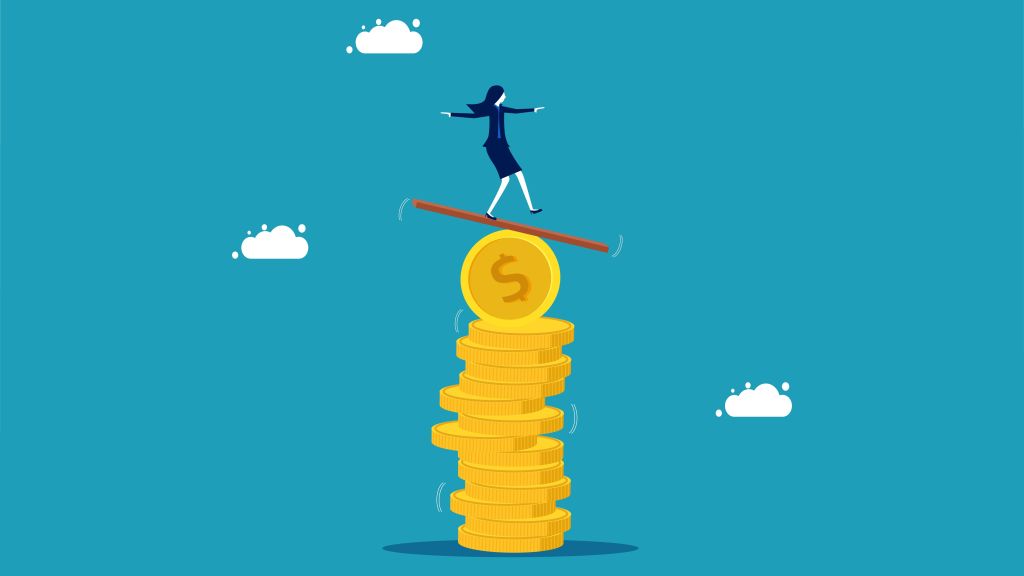Published August 29, 2023 • 6 Min Read
While inflation has slowed markedly, things might not feel much better at the cash register. Prices are still going up – on groceries, rents and more – just at a slower pace. Meanwhile, central banks have been careful not to declare victory over sticky inflation, with many promising to act again if rates flare back up.
In Canada, the Bank of Canada (BoC) raised interest rates 10 times since March 2022, part of a global campaign by Western central banks to tame inflation.
So why haven’t the successive waves of rate increases brought inflation down to the target range of about two per cent, where rates feel much more predictable? The short answer, economists argue, is that factors pushing up inflation are often out of central banks’ control.
Here’s a look at some of them.
Interest-rate increases don’t work right away
Higher interest rates mean it’s more expensive for people and companies to borrow. As consumers, we can feel the effects pretty quickly – think payments on car loans or mortgages. But it’s important to note that interest-rate decisions actually work with a lag in the big scheme of things. Generally, economists expect it to take around a year to 18 months for the effects of central banks’ efforts to trickle into the economy.
Much like a spigot, a central bank is tasked with ensuring just the right amount of money – not too much, not too little – is floating around the economy to keep it humming at a predictable pace. Central banks raise rates to increase the cost of borrowing in hopes of cooling an economy. Conversely, they may cut rates to reduce debt costs and stimulate economic growth.
When central banks make rate decisions, not every sector will be affected in the same way.
“Discretionary goods and services are most sensitive to interest-rate decisions,” says Carrie Freestone, an RBC economist. The housing market is also rate-sensitive, as higher borrowing costs tend to slow demand, though home prices in many Canadian cities have held steady in recent months partly due to tight supply. (But that’s another conversation!)
Freestone says higher interest rates and prices have yet to significantly dampen spending.
“Thanks to pandemic lockdowns, we still have exceptional levels of pent-up demand for discretionary services, which means that they have been insulated from higher rates a little bit this time around. Many Canadians appear to be willing to pay a bit more for travel and restaurants,” she says.
Canada’s population is getting older
When there are not enough young workers to replace retirees, it’s bad news for inflation.
The world is getting old – and fast. Globally, one in every four people may be aged 65 years or older by 2050, according to data from the United Nations1 . Meanwhile, birth rates have been declining in many advanced economies, including here in Canada.
“In some industries like the skilled trades, a quarter of the labour force in that sector is set to retire in the next decade,” says Freestone, adding that a greying workforce is inflationary. Why? As the workforce shrinks, employers will have to pay more, pushing up wages. Labour shortages could also crimp production, driving up the cost of goods.
“If we have structurally higher wage growth resulting from labour shortages, we’ll need a counterbalance. Otherwise, demand will outpace supply and we’ll have inflation again,” says Freestone.
Government spending can get out of step with interest rates
Government spending and taxation decisions – collectively known as fiscal policy – also help determine the amount of money circulating through the economy.
For example, government income-support programs during the pandemic increased household savings, allowing people to keep spending.
According to a 2023 BoC working paper2 , government spending can fuel inflation to the same extent that tight labour markets can.
Freestone agrees. “Higher government spending puts more money in the hands of consumers who will spend it,” Freestone says, explaining that fiscal policy should ideally move in the same direction of monetary policy.
“If the federal government is injecting excess cash into the economy when the BoC is moving to hike, excess cash can weaken the impact of each rate hike,” she explains. “Canadians will ultimately spend the extra cash they’re given, so excess cash fuels demand (and subsequently inflation).”
Housing costs make up a big chunk of inflation
In theory, central banks increase interest rates to tame inflation by making borrowing more expensive. The reality is more complicated.
Shelter costs – like your mortgage or rent – account for 28 per cent of the Consumer Price Index (CPI), used by economists to calculate inflation, says Freestone. Amid rate hikes, mortgage costs alone have shot up 30 per cent from a year ago as of July 2023, data from RBC Economics shows, accounting for about a third of year-over-year growth of headline inflation.
What does that tell us? While interest-rate hikes may have succeeded in slowing price increases on, say, your grocery bill, the resulting increase to shelter costs offset a chunk of that progress, making inflation that much stickier.
An interconnected world
The causes of high inflation aren’t confined to Canada’s borders. Macroeconomic events, including political ones, can mess with the BoC’s best efforts.
For instance, Russia’s invasion of Ukraine, a major food exporter, led to grain shortages that pushed up prices of bread and other goods. According to an estimate3 of the U.S. Federal Reserve, the war likely had increased global inflation by 1.3 per cent in 2022. And when thousands of port workers went on strike in B.C. in July, there were concerns that inflation could flare up amid the walkout due to concerns over supply-chain disruptions.
Let’s be real: fighting inflation is tough
Interest rates are a powerful inflation-fighting tool in the Bank of Canada’s toolbelt, but if we take a look at the above, they’re not a magic wand for runaway inflation. It takes dedicated effort, smart decision-making, impeccable timing and (as any economist will tell you) a whole lot of luck to bring inflation down from multi-decade highs without triggering a deep recession. A lot to think about? Definitely. For now, we can just watch and wait to see what the BoC does next. Keep an eye on rbc.com/economics for regular updates.
Sources:
1 United Nations Department of Economic and Social Affairs, 2022. “World Population Prospects 2022.”
2 Bank of Canada, June 2023. “Understanding Inflation Dynamics: The Role of Government Expenditures.”
3 U.S. Federal Reserve, May 2022. “The Effect of the War in Ukraine on Global Activity and Inflation.”
Investment advice is provided by Royal Mutual Funds Inc. (RMFI). RMFI, RBC Global Asset Management Inc., Royal Bank of Canada, Royal Trust Corporation of Canada and The Royal Trust Company are separate corporate entities which are affiliated. RMFI is licensed as a financial services firm in the province of Quebec.
This article is intended as general information only and is not to be relied upon as constituting legal, financial or other professional advice. A professional advisor should be consulted regarding your specific situation. Information presented is believed to be factual and up-to-date but we do not guarantee its accuracy and it should not be regarded as a complete analysis of the subjects discussed. All expressions of opinion reflect the judgment of the authors as of the date of publication and are subject to change. No endorsement of any third parties or their advice, opinions, information, products or services is expressly given or implied by Royal Bank of Canada or any of its affiliates.
Any information, opinions or views provided in this document, including hyperlinks to the RBC Direct Investing Inc. website or the websites of its affiliates or third parties, are for your general information only, and are not intended to provide legal, investment, financial, accounting, tax or other professional advice. While information presented is believed to be factual and current, its accuracy is not guaranteed and it should not be regarded as a complete analysis of the subjects discussed. All expressions of opinion reflect the judgment of the author(s) as of the date of publication and are subject to change. No endorsement of any third parties or their advice, opinions, information, products or services is expressly given or implied by RBC Direct Investing Inc. or its affiliates. You should consult with your advisor before taking any action based upon the information contained in this document.
Furthermore, the products, services and securities referred to in this publication are only available in Canada and other jurisdictions where they may be legally offered for sale. Information available on the RBC Direct Investing website is intended for access by residents of Canada only, and should not be accessed from any jurisdiction outside Canada.
Share This Article






